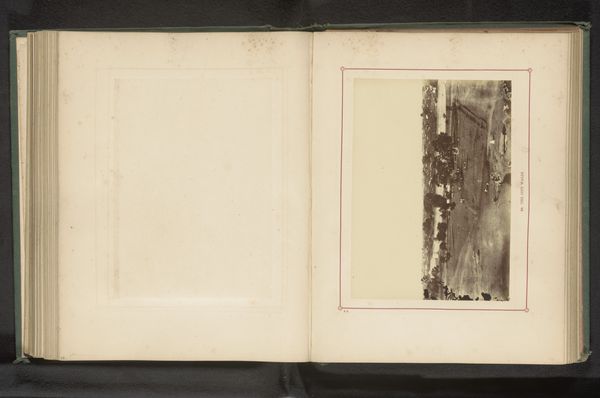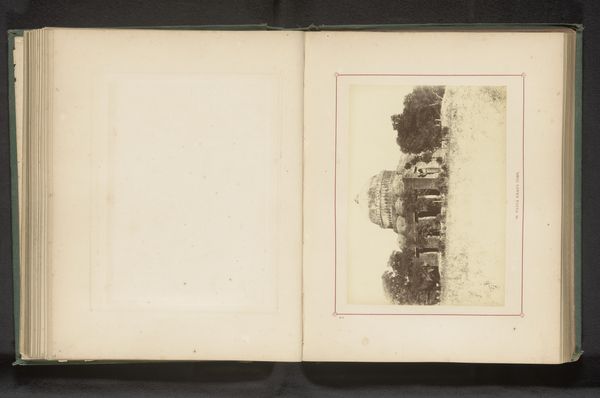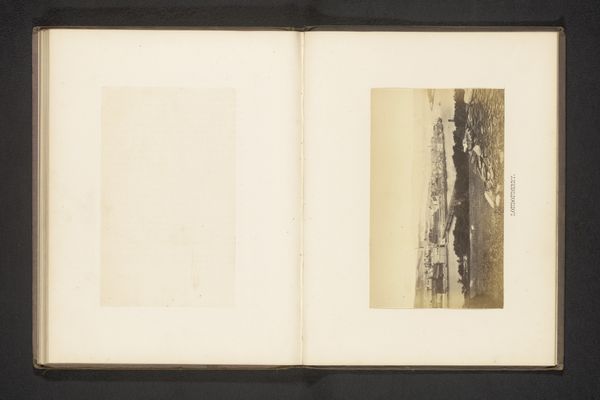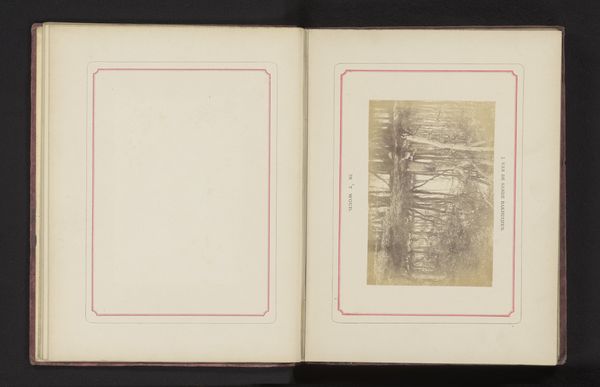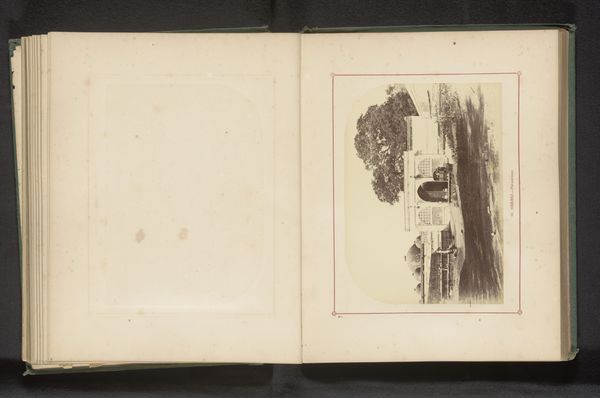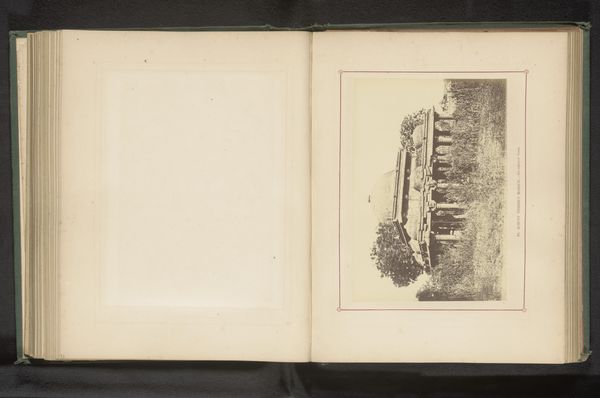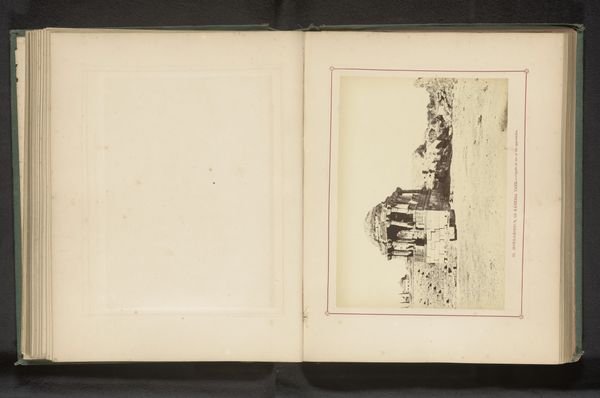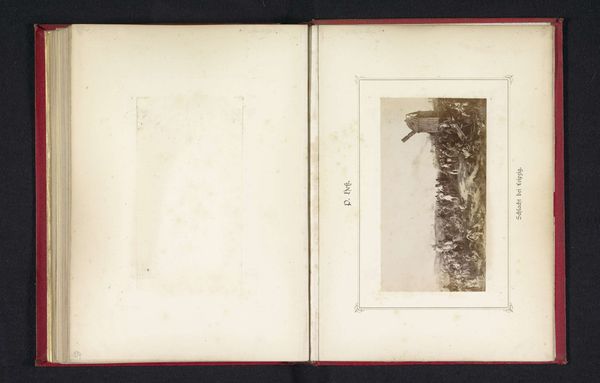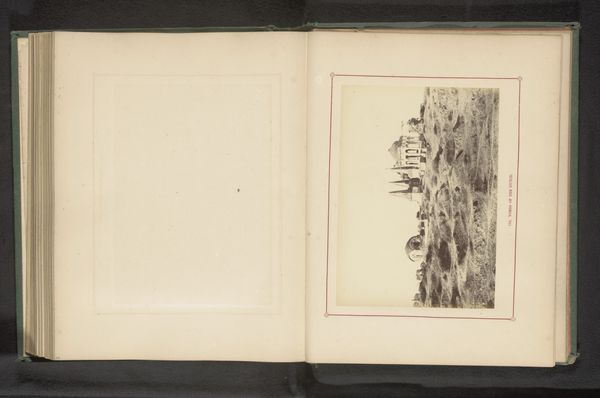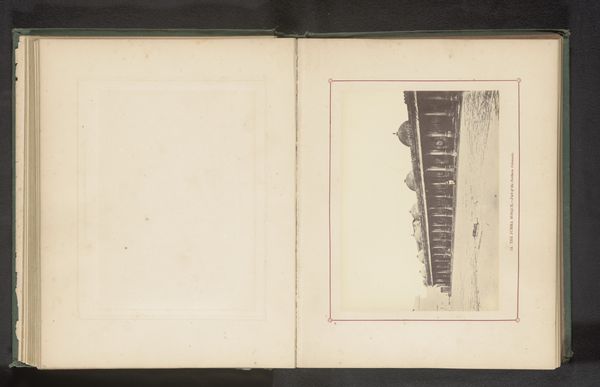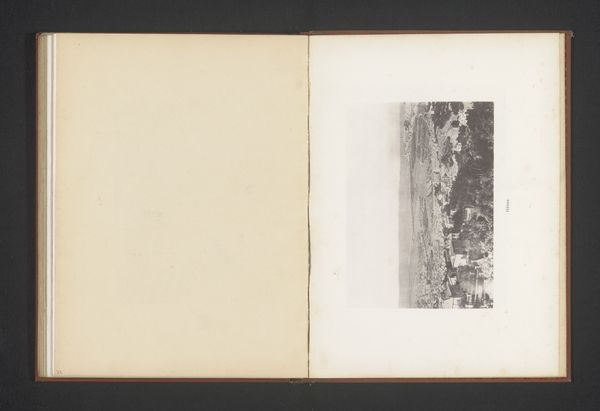
Gezicht op een sluis voor het waterbassin en de ruïne van een paleis op Sarkhej Roza bij Ahmedabad before 1866
0:00
0:00
photography, albumen-print
#
landscape
#
photography
#
coloured pencil
#
orientalism
#
albumen-print
Dimensions: height 135 mm, width 188 mm
Copyright: Rijks Museum: Open Domain
Curator: Oh, hello! And welcome. We're standing before an intriguing albumen print from before 1866. Thomas Biggs is the artist and it's called "Gezicht op een sluis voor het waterbassin en de ruïne van een paleis op Sarkhej Roza bij Ahmedabad." Quite a mouthful! What strikes you first? Editor: A ghost story, maybe? The desaturated tones create an ethereal effect, a little spooky, really. And the symmetry--almost a mirror image--is compelling. It’s melancholic, even. Curator: Absolutely! Symmetry often implies balance or order, but here, it's haunted by ruins. It creates an intriguing juxtaposition. Sarkhej Roza itself, near Ahmedabad, India, was once a Sufi shrine and a complex of tombs, pavilions, and mosques. Its architectural features blend Islamic and Hindu styles. Seeing it rendered in this light is interesting. Editor: I notice that interplay. It seems that the ruin looms large in this composition. As an iconographer, I cannot help but notice how easily ruins stand as symbols of lost glory, of the ephemerality of earthly power, especially photographed during a period of colonialism, when such places could be taken as "evidence" for a certain world-historical narrative of civilizational progress or decline. Curator: Fascinating! This photograph almost feels like a visual document, reflecting an Orientalist perspective of the time. A romantic, slightly mournful gaze upon a distant and, to Western eyes, "exotic" locale. Biggs, as a British photographer in India, would've undoubtedly been influenced by such a viewpoint. Do you think the albumen print medium adds to that? Editor: Definitely! Albumen prints, with their tonal range, were popular at the time, but they tend to age into this very particular sepia wash. The decay of the photograph then almost parallels the decay of the subject itself. Curator: It’s like history mirroring itself! The photographic process ages with the monument it captured. Thomas Biggs definitely knew what he was doing when he framed the perspective so purposefully. Editor: Perhaps. Or perhaps he wasn't consciously aware. Sometimes these things are felt, intuited... Images carry meanings and associations regardless of the intentions of their creators. The ruins certainly resonate and speak of the vicissitudes of time. Curator: That’s insightful! The past lingers—not just in the stones of Sarkhej Roza but within the photograph itself, influencing how we engage with its images. Thanks so much for these remarks.
Comments
No comments
Be the first to comment and join the conversation on the ultimate creative platform.

